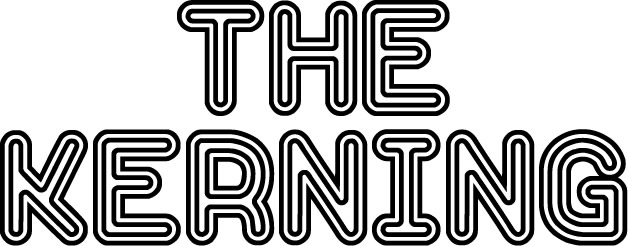
Typography involves much more than selecting the right typeface; it also requires careful attention to the spacing between letters and words. Kerning and tracking are two essential techniques that allow designers to achieve harmonious and visually pleasing typography. In this article, we will explore the concepts of kerning and tracking, their purpose, and how they contribute to the overall aesthetics and readability of typographic compositions.

- Kerning: Kerning refers to the adjustment of space between individual pairs of letters. In many typefaces, certain letter combinations may appear uneven or visually disjointed due to variations in the shapes of the letterforms. Kerning aims to create a more balanced and visually pleasing appearance by reducing or increasing the space between specific letter pairs.Kerning is particularly important for improving the legibility and overall aesthetics of typography. It ensures that there are no distracting gaps or collisions between adjacent letters, allowing the reader’s eye to smoothly navigate through the text. Proper kerning enhances the visual harmony and coherence of the typographic composition.
- Tracking: Tracking, also known as letter-spacing, refers to the adjustment of space between all letters in a block of text. Unlike kerning, which focuses on specific letter pairs, tracking modifies the overall spacing uniformly across the entire text.The purpose of tracking is to establish a consistent and visually balanced texture in the text. Increasing the tracking can create a more open and spacious appearance, suitable for headlines or display type. Decreasing the tracking can result in a tighter and more compact text, suitable for large blocks of body copy or when space is limited.
- Achieving Harmonious Use: To achieve harmonious typography, it is important to use kerning and tracking effectively and in balance with other design elements. Here are some key considerations:a. Optimal Kerning: Careful kerning can significantly improve the overall readability and aesthetics of the typography. Focus on letter combinations that tend to create spacing issues, such as “AV,” “To,” or “Te,” and adjust the spacing to create a visually pleasing result. Avoid excessive or inconsistent kerning, as it can disrupt the overall flow of the text.b. Consistent Tracking: Maintain consistent tracking throughout the text to ensure a unified and balanced appearance. Avoid sudden changes in tracking within a paragraph, as it can create visual distractions. Use different tracking values for different typographic elements, such as headings, subheadings, and body text, to establish a visual hierarchy.c. Contextual Considerations: Consider the intended context and purpose of the typography. Display type may benefit from tighter tracking to create impact and legibility at larger sizes, while body text requires looser tracking for optimal readability. Adapt the tracking to suit the specific needs of the typography and the intended audience.d. Balance with Other Elements: Kerning and tracking should work harmoniously with other design elements, such as line spacing, margins, and the overall layout. Ensure that the spacing between lines and paragraphs complements the letter spacing to create a visually pleasing composition.e. Test and Iterate: Typography is a highly subjective field, and what may appear harmonious to one person may not be the same for another. It is important to test the typography across different mediums, such as print and digital, and gather feedback to make necessary adjustments. Iterate and refine the kerning and tracking until the desired result is achieved.
In conclusion, kerning and tracking are essential techniques in typography that allow designers to achieve harmonious and visually appealing compositions. Proper kerning ensures that individual letter pairs are balanced and visually pleasing, while tracking establishes consistent spacing across the entire text.

